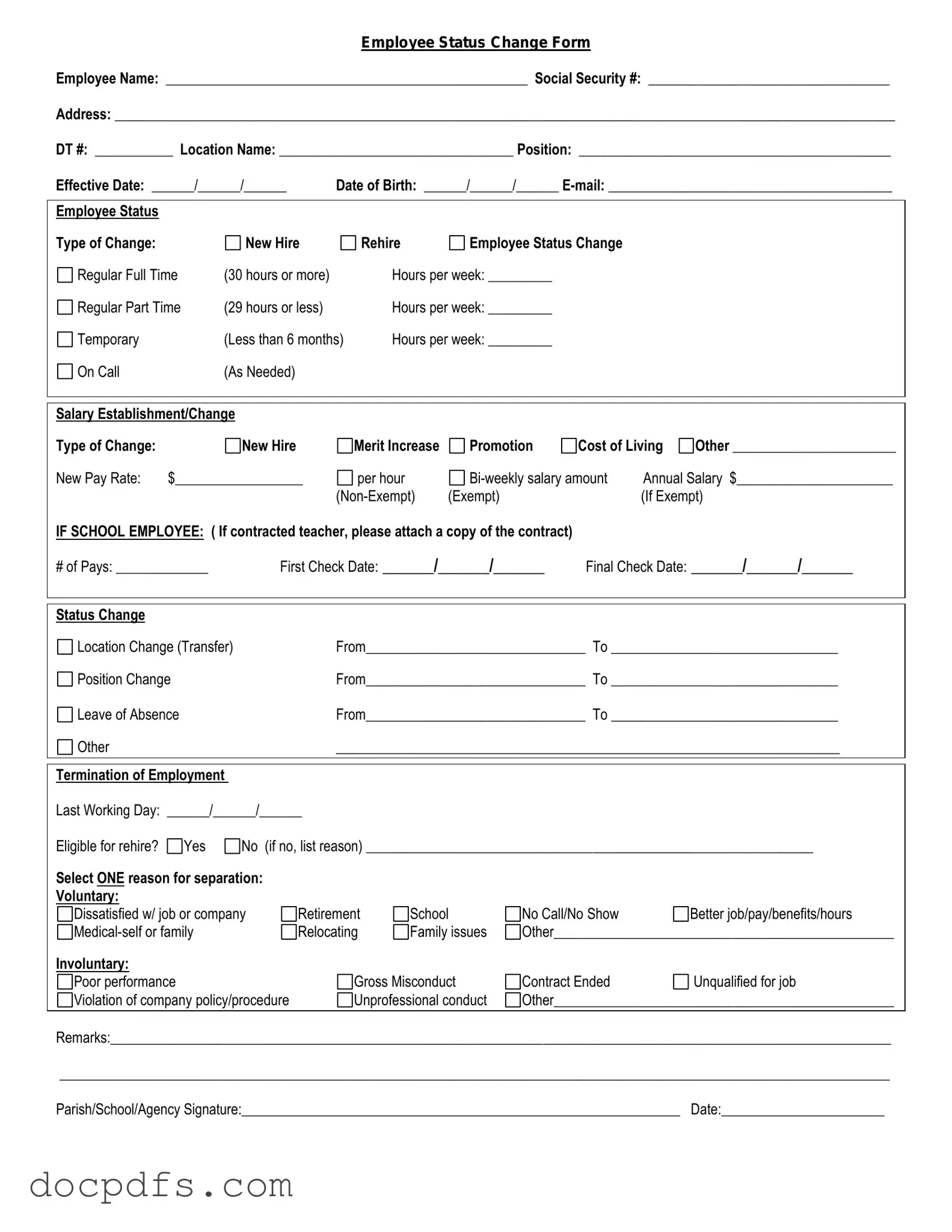The Employee Status Change form is a document used to formally notify the Human Resources department of any changes in an employee's status. This may include changes such as promotions, transfers, demotions, or terminations. Completing this form ensures that all relevant parties are informed and that the employee's records are updated accordingly.
Typically, the form is filled out by a supervisor or manager who is overseeing the employee whose status is changing. However, employees may also have the opportunity to initiate the process, particularly in cases of voluntary changes such as resignations or requests for transfers.
The form generally requires the following information:
-
Employee's name and identification number
-
Current position and department
-
Details of the change (e.g., promotion, transfer)
-
Effective date of the change
-
Reason for the change
-
Signatures from the employee and supervisor
Once the form is completed, it should be submitted to the Human Resources department. This can usually be done through email, in person, or via an internal HR management system, depending on your organization's procedures. Ensure that all required signatures are obtained before submission to avoid delays.
After submission, the Human Resources department will review the form to ensure all necessary information is provided. If everything is in order, they will process the change and update the employee's records. The employee and supervisor may receive confirmation once the change has been officially recorded.
Yes, if an employee disagrees with a decision made following the submission of the form, they may have the option to appeal. It is advisable to consult the organization's employee handbook or HR policies for specific procedures regarding appeals. Typically, this process involves submitting a written request to a designated HR representative.
Deadlines for submission may vary depending on the nature of the change and organizational policies. It is best to submit the form as soon as the change is known to ensure timely processing. If there are specific deadlines, they will usually be communicated by the Human Resources department.
